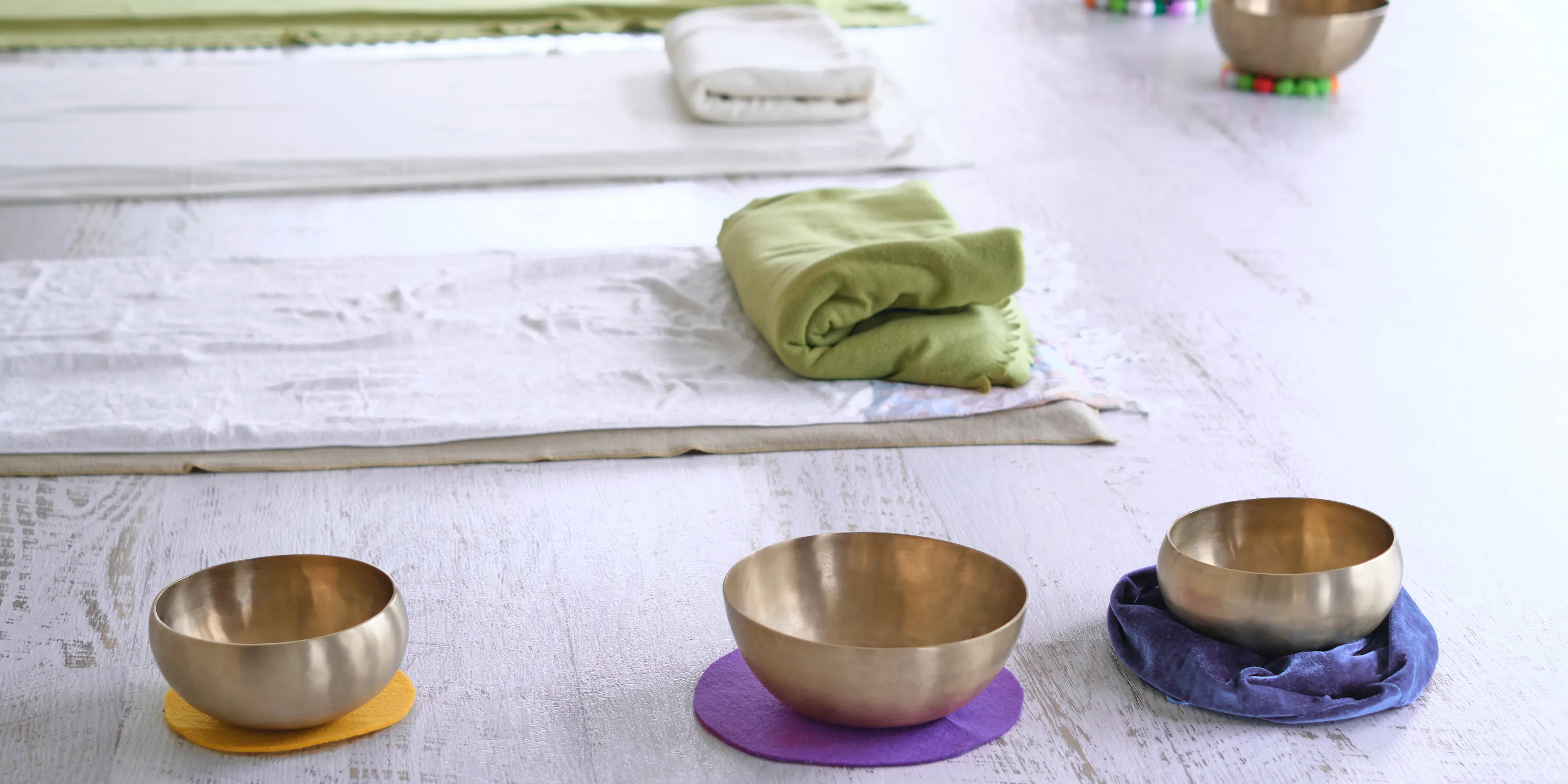Did you know that many ancient cultures believed sound and music were powerful ways to cleanse and purify the body? Today, with so many looking for safe and natural ways to overcome their anxiety and physical ailments, sound therapy is making a comeback in a big way. Hello.
Table of Contents
More and more therapists are finding success using sound therapy, and there is real scientific data to support the use of music as medicine as well.
“We’ve found compelling evidence that musical interventions can play a health-care role in settings ranging from operating rooms to family clinics.” Daniel J. Levitin, “Your Brain on Music” (Plume/Penguin, 2007).
Indeed, sound produces vibrations at specific frequencies that correspond to the natural resonant frequencies of the human body. Vibrational sound healing is thought to stimulate the body's natural healing mechanisms, especially within the internal organs. Sound therapy can also be used to provide relief for symptoms caused by a variety of different conditions, such as:
- Insomnia
- High blood pressure
- Stress and anxiety
- High cholesterol
Sound therapy is supported by a growing body of research. It's been shown that listening to certain frequencies can improve overall well-being, specifically relieving the symptoms of conditions like insomnia or chronic pain. Research has also found that the quality of sleep and overall well-being can be improved through the use of certain sounds.
How Does Sound Healing Work?
One way to think about sound healing is to think about the body as a resonating system. Everything in the body, from brain waves to the movement of cells, naturally vibrates at certain frequencies. Being exposed to sounds or music belonging to particular resonance frequencies can stimulate different parts of the body, creating a variety of effects depending on the frequency. After undergoing therapy, you may feel:
- More at ease
- Balanced
- Energized
Sound can also help create the right environment for relaxation and sleep. Gentle music or ambient noise has often been shown to help people relax and manage conditions like insomnia. In short, sound therapy can be a natural, safe, and effective way of helping the body and mind to heal.
Sound is often thought of as simply relaxing therapy, but in fact, there are a number of different types of sound therapy that are effective for different physical and emotional ailments.
The Benefits of Sound Healing
Sound healing sessions may also take place through different kinds of practice sessions with a professional. In some cases, the client will lie down or sit comfortably in a quiet room. The sound healer may use a number of different instruments to create healing sounds that resonate with the client's needs.
The purpose of this exercise can be:
Restorative
In restorative sound therapy, the therapist tries to induce a state of gentle relaxation. Something like a chant, tone, or wind instrument will produce a soft, subtle sound that is reminiscent of human voices.
Transformational
Transformation sound therapy uses a more powerful, vibrant sound intended to raise the listener's self-awareness and consciousness.
Balance
Balanced sound healing therapy uses sounds that are neither restful nor overly active but are generally easier to tolerate when one is first listening. They usually come from pulsating instruments, like drumming or Tibetan singing bowls that can produce a variety of tones.
Overall, participants have also noted a number of beneficial effects from sound healing. They report:
- Letting go of stress and anxiety
- Clearer decision-making abilities
- Generating innovative ideas
- Improved memory and attention span
The Different Types of Sound Healing
In the course of sound healing, the therapist will guide you through a series of sessions using instruments meant to resonate at different frequencies. The range and style of instruments used can vary widely.
Singing Bowls
A singing bowl is a hollow bowl that is struck to create a variety of sounds. The bowl is usually suspended in a bowl of water and can be struck with the fingers, a stick, or a mallet. A singing bowl can be used to clear the mind and create a pleasant, relaxing ambient environment.
Binaural Beats
Binaural beats are created by the simultaneous stimulation of both ears with two different sounds that are slightly out of phase with each other. Binaural beats can be used to help induce deep relaxation and have been shown to improve overall well-being.
Research has shown that the brain reacts to binaural beats by producing a specific pattern of brain waves, known as the theta brainwave pattern. This is thought to help induce a state of relaxation and well-being.
Tuning Forks
A tuning fork is a simple instrument that is used to help the body and mind tune in to a specific frequency. It can be used to stimulate different parts of the body or can be used to create a sense of peace and relaxation. Tuning forks are often used to help clear the mind and create a sensation of calm.
Gongs
A gong is a percussion instrument with a long history of use in sound healing. They are thought to benefit the limbic and circulatory systems of the body, which can stimulate the internal organs, make breathing easier, and help the entire body feel more energized.
Vocal Toning
Vocal toning is a form of singing in which the vocal cords are used instead of musical instruments. Vocal toning is thought to encourage a relaxed state and promote healing, lower stress levels, and increase immune response. Some research even shows that voice therapy can effectively lower blood pressure.
How Can I Find Sound Healing Near Me?
Sound healing is an approach that can benefit almost anyone, regardless of age, gender, or medical condition. Although one should always check with a doctor first, there are very few risks associated with sound healing. It's a natural therapy grounded in our intrinsic love for beautiful sounds and music. It may not replace other medical treatments, but sound healing has an important part to play in physical and emotional well-being and recovery.
That said, it can be a bit of a challenge to find an experienced sound therapist in your area. If you're interested in receiving sound therapy, Sofia Health is here for you. We make it easy to connect with sound healing professionals online from the comfort of your home.
Sources:
- American Psychological Association: "Music as Medicine."
- Colorado State University Global: "Increasing Cognitive Function with Binaural Beats."
- Global Advances in Health and Medicine: "Life Rhythm as a Symphony of Oscillatory Patterns: Electromagnetic Energy and Sound Vibration Modulates Gene Expression for Biological Signaling and Healing."
- John Hopkins Medicine: "Keeping the Brain Young with Music."
- Journal of Evidence-based Complementary & Alternative Medicine: "Effects of Singing Bowl Sound Meditation on Mood, Tension, and Well-being: An Observational Study."
- Levitin, Daniel J. Your Brain on Music. Plume/Penguin, 2007.
- Nature and Science of Sleep: "Music Therapy as a Potential Intervention for Sleep Improvement."
- Neurofeedback Alliance: "Understanding Brainwaves."
- Parenting Special Needs Magazine: "If I Were a Parent Today... Vocal Toning for the Modern Parent."
- Psychology Today: "The Healing Power of Sound."
- The Complementary Medicine Association: "What Is Sound Healing?"



.png)

.png)

